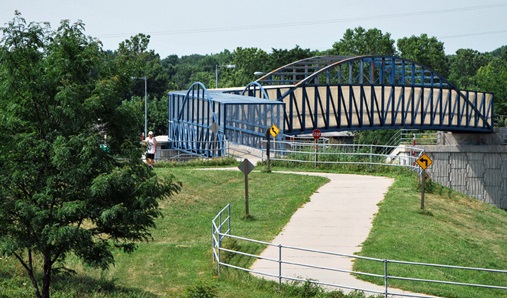Each month in our Open Voices blog we share insight from leaders in our communities who are advancing what it means to have sacred, open green spaces in our cities. In February, we look at the roots of the TKF Foundation’s mission to provide public greenspaces that offer temporary sanctuary, encourage reflection, provide solace and engender peace and well being.
Can community green spaces help relieve the stress from everyday tasks and life events? And, what might be special about nearby green spaces?
It doesn’t take a scientist to know that a nearby park helps you feel better and spend time with your family. But does science have anything to say about stress and nearby nature spaces? We know that simple visual exposure to nearby nature (such as window views and green roadsides) alone or combined with moderate activity in green spaces can effectively reduce stress. Multiple studies demonstrate the restorative benefits of nature when participants complete a stressful task followed by prompts of natural or built areas. Blood pressure lowers when study subjects look out a window with a view of trees. Nature walks are associated with blood pressure improvement, better task performance, and decreased anger compared to results of an urban walk! 1 And,we know that our heart rates decrease more rapidly with a window view of a natural scene compared to a view of a blank wall or a natural scene presented on a plasma screen.2
Since 2007, the American Planning Association (APA) requests submissions of American’s favorite streets, neighborhoods, and public spaces. Places selected for designation as a Great Neighborhood, Great Street, or Great Public Space are recognized by APA during National Community Planning Month each October.

1. Promotes human contact and social activities.
2. Is safe, welcoming, and accommodating for all users.
3. Has design and architectural features that are visually interesting.
4. Promotes community involvement.
5. Reflects the local culture or history.
6. Relates well to bordering uses.
7. Is well maintained.
8. Has a unique or special character.
And, the APA asks submitters to contemplate and answer other questions about their favorite public space. A couple of questions stand out when we think about sacred spaces and refuge from chronic, daily stress:
* Does the space serve as a place of inspiration or contemplation, or is it considered sacred?
* What is it about the space that contributes to a sense of community?
You can submit your own favorite, stress-reducing green space by visiting the APA site: https://www.planning.org/greatplaces/
